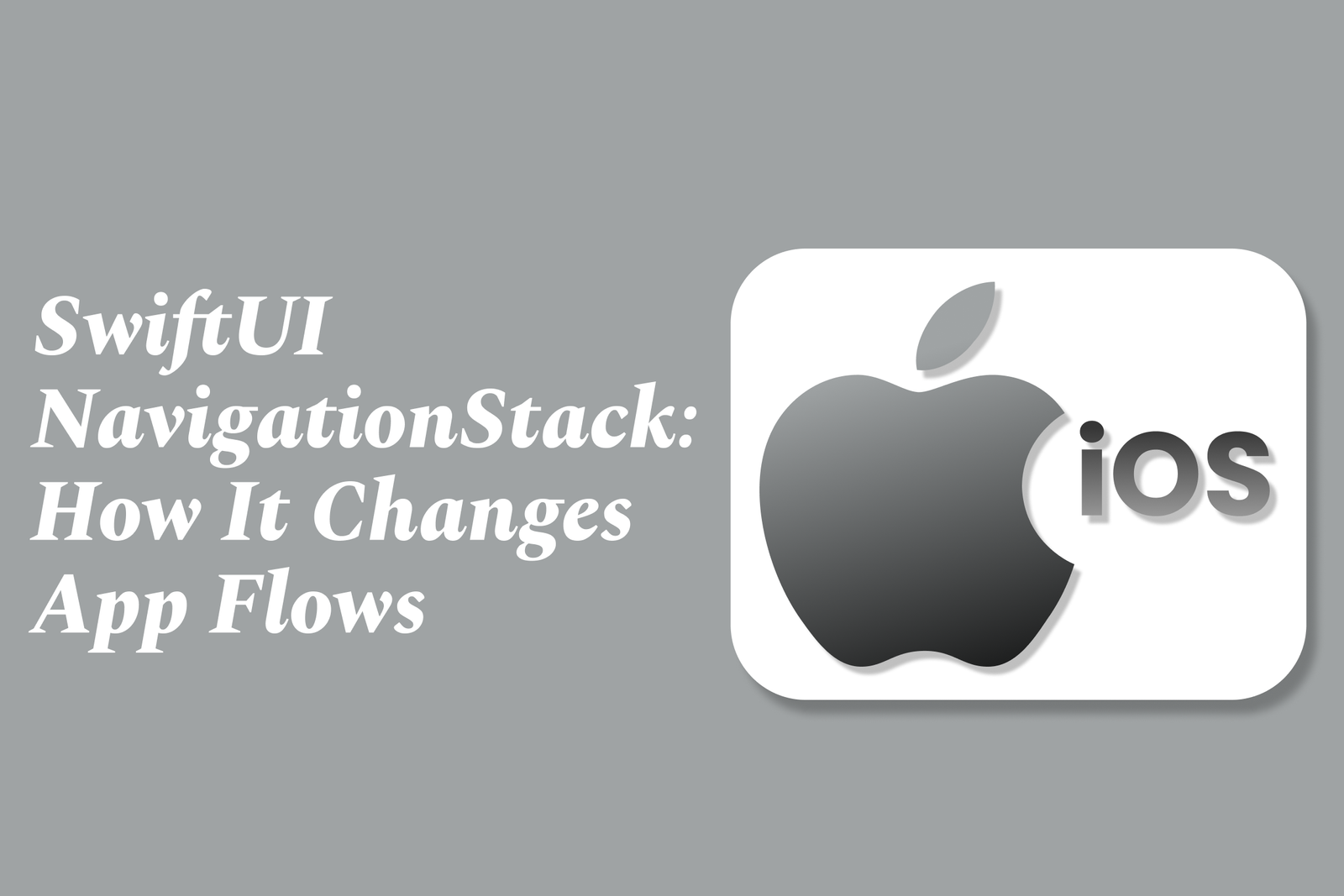SwiftUI navigationStack: How it changes app flows
SwiftUI's NavigationStack introduces a modern, stack-based navigation system that simplifies managing complex and dynamic app flows. It offers clearer control over navigation state, enabling more flexible, programmatic, and deeply nested screen transitions compared to earlier NavigationView.
SwiftUI NavigationStack: How It Changes App Flows
1 ) Challenges with SwiftUI Navigation
SwiftUI navigation is often perceived as limited and sometimes difficult to implement, especially for complex or conditional flows. Unlike UIKit’s UINavigationController that manages a clear stack of view controllers, SwiftUI’s NavigationView and NavigationLink do not naturally support deep or state driven navigation stacks, requiring developers to seek workarounds or create custom solutions.
2 ) Common Use Case: Conditional and Sequential Navigation
A typical scenario involves a feature screen that is accessible only after the user completes prerequisite steps, such as providing personal details or settings. This creates a multi screen flow where navigation must be conditionally gated.
On app launch, a main screen appears.
The user taps a button to access a feature screen.
If necessary details are missing, a sequence of “setup” screens is presented first.
Navigation always provides a “back” option to allow abandoning setup and returning to the main screen.
3 ) UIKit vs SwiftUI Navigation Approaches
In UIKit, such a flow is straightforward with UINavigationController and coordinators that manipulate the view controller stack (e.g., using `setViewControllers:animated:`). This allows centralized control over navigation state and behavior.
In SwiftUI, NavigationView and NavigationLink do not directly expose stack management and are less flexible for complex flows. Developers sometimes wrap UINavigationController inside `UIViewControllerRepresentable` to regain control.
4 ) Managing Navigation State in SwiftUI with The Composable Architecture
One approach is to replicate UINavigationController’s stack using an array of screen states inside a navigation state object. Each screen can have its own store to isolate logic, and navigation changes are managed explicitly by updating the array, simulating pushing and popping screens.
However, designing this with The Composable Architecture requires careful store scoping, and reducer pullback patterns can become complex. Coordination between screens and navigation logic often involves manual store updates and explicit navigation state mutations.
5 ) Community and Alternative Solutions
The SwiftUI navigation limitations have led to community discussions and experimental projects. For example:
Alternatives like `swiftui navigation stack` offer stack based navigation with greater control over animations and programmatic navigation.
Developers share experiences and code in forums and GitHub repositories to improve techniques for multi screen flows in SwiftUI.
6 ) Summary: NavigationStack’s Evolution and Impact
SwiftUI’s NavigationStack concept, while powerful in theory, still presents challenges for developers building complex, state driven navigation flows. It requires rethinking traditional UIKit paradigms and often combining multiple architectural patterns or custom navigation management. The ecosystem is evolving, with ongoing enhancements and community driven solutions aimed at empowering app developers to implement richer, more flexible navigation flows efficiently.
https://justacademy.in/news-detail/react-native-0.74-released:-what?s-new?
https://justacademy.in/news-detail/flutter-global-summit-updates
https://justacademy.in/news-detail/flutter-roadmap-beyond-2025
https://justacademy.in/news-detail/react-native?s-latest-update-fixes-your-biggest-performance-issues
https://justacademy.in/news-detail/android-language-support-updates
Related Posts
Java supports GDPR and data privacy by enabling secure data handling through encryption, controlled access, and precise data management. It allows developers to minimize PII exposure, ensure data confidentiality, and design workflows that comply with data protection regulations effectively.
Java code quality tools have evolved to include advanced static analysis, integrated security checks, and AI-powered code reviews. These updates help developers detect bugs, enforce coding standards, and enhance security, streamlining the development process and improving overall code reliability.
Java remains a cornerstone in big tech companies, evolving with modern features like records, pattern matching, and virtual threads. Its robust ecosystem, enhanced performance, and growing AI integrations keep it vital for both legacy systems and innovative new projects.
Java and CI/CD pipeline optimizations streamline Java application development by automating builds, tests, and deployments. They improve efficiency through parallelization, caching, and secure secrets management, enabling faster feedback loops and more reliable, scalable software delivery.
Java supports modern cryptography standards through its flexible Java Cryptography Architecture (JCA), enabling integration of advanced algorithms like AES, EdDSA, and post-quantum tools. Libraries like Bouncy Castle offer FIPS-certified, hardware-accelerated implementations for secure development.
Java 23 enhances record patterns by enabling concise, direct destructuring of record components within pattern matching, simplifying type checks and data extraction. This improvement boosts code readability and expressiveness by reducing boilerplate in handling immutable data classes.
Java remains a top choice for mobile app backends, powering scalable, secure, and high-performance server-side solutions. Latest trends include cloud-native microservices, reactive programming, and enhanced JVM optimizations, enabling efficient, flexible, and robust mobile backend development.
Java SE 24 and LTS Java SE 21 offer enhanced features and performance, while Apache Spark 4.0.0 introduces Scala 2.13 support and advanced ML and SQL capabilities. Together, they empower developers to build scalable, high-performance data applications with modern tools.
JUnit 5 modernizes Java testing with a modular architecture, improved assertions, and seamless Java 8+ support. Beyond JUnit, tools like Mockito and AssertJ enhance mocking and assertions, creating a powerful, flexible ecosystem for writing clean, efficient Java unit tests.
Java plays a pivotal role in cloud automation tools by providing a robust, platform-independent language used to build scalable automation frameworks like Jenkins and Selenium, enabling efficient CI/CD pipelines, testing, and orchestration across diverse cloud environments.










